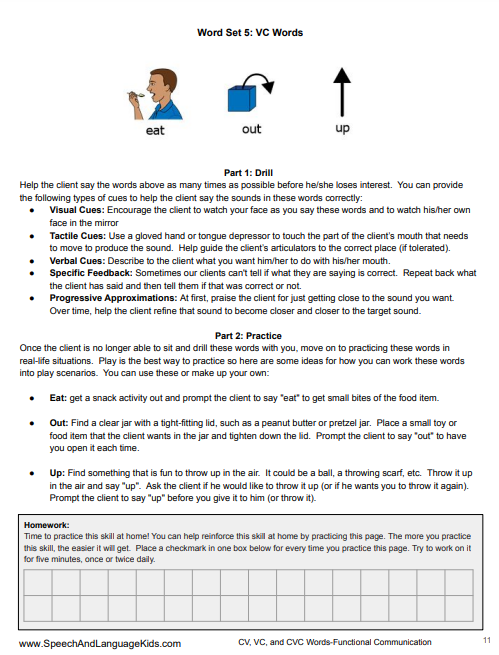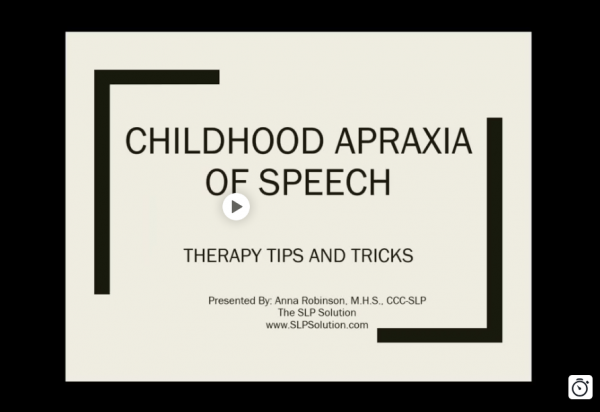Teaching Adjectives to Children:
Activities and Worksheets for Helping Kids Learn Adjectives
Childhood Apraxia of Speech (CAS) is a rare, neurologically-based speech disorder where the child knows what he wants to say but the message gets mixed up in the motor-planning and execution phase so the sounds come out all wrong. Though the diagnosis of CAS is relatively new, experts have agreed that CAS usually includes these 3 generally-agreed upon components:
- Inconsistent errors on consonants and vowels in repeated productions of syllables or words(meaning that if the child says the same word many times, it may sound differently each time)
- Lengthened and disrupted coarticulatory transitions (meaning that the child’s speech sounds choppy or disconnected due to trouble transitioning between sounds or between words in older children)
- Inappropriate prosody, especially in the realization of lexical or phrasal stress between sounds and syllables (meaning that the rhythm, intonation, and stress of speech may sound off, the child may sound robotic, have incorrect phrasing, or stress the wrong words or syllables)
Listen to the Podcast on Nancy Kaufman’s Speech Therapy Approach for Childhood Apaxia of Speech
Links Mentioned:
Carrie’s Apraxia Page:
http://www.speechandlanguagekids.com/childhood-apraxia-speech-resource-page/
Carrie’s Apraxia Book:
http://www.speechandlanguagekids.com/products/ (Check the books at the top of the page)
Nancy Kaufman’s Speech Praxis Materials:
http://www.northernspeech.com/search/author/Nancy_Kaufman/
Childhood Apraxia of Speech Association of North America:
Who is Nancy Kaufman?
Nancy R. Kaufman, M.A. CCC-SLP is the owner and Director of the Kaufman Children’s Center for Speech, Language, Sensory-Motor and Social Connections located in West Bloomfield, Michigan. Nancy has been evaluating and treating children, specializing in CAS since 1979.
Nancy is the author of the Kaufman Speech to Language Protocol (K-SLP) an evidence based method of helping children with CAS and other speech sound disorders become effective vocal communicators. She is the author of many materials to help children who struggle to speak, published by Northern Speech Services.
Nancy serves on the Childhood Apraxia of Speech Association of North America (CASANA) advisory board. She was awarded the Michigan State University College of Communication Arts and Sciences Outstanding Alumni award and the Michigan Speech Language Hearing Association’s Distinguished Service Award.
Nancy continues to work directly with children through intensive programs at the KCC consulting with SLPs and families through video consultations and conferences.
What is the Successive Approximations Approach for Apraxia Treatment?
In this approach, you take a word that a child cannot say and you find the closest approximation (or attempt at saying the word) that the child is able to produce. The therapist teaches the child to say the word in that “close but not quite there” manner.
For example, if a child is able to say the “t” sound but not the “k” sound, the therapist would teach the child to say “tootie” instead of “cookie”. Once the child had mastered this approximation of the word, the therapist would work to gradually teach closer and closer approximations until the child is able to produce the word correctly.
How Much Therapy do Children with CAS need?
- More is always better
- Is often based on school schedule and availability
- At Nancy’s clinic, local children come twice per week and out of state children come for multi-day intensive therapy
How Important is Home Practice for Chidhood Apraxia of Speech Treatment?
- Every family has many demands on them, especially those with special needs so you don’t want to overwhelm
- Important to teach parents how to treat their child during play so they can work it into daily routines
- Teach parents scripts they can use during play that will improve speech skills
- Anticipate what the child wants to say
- Provide the child with a model for the single word (or a phrase with a consistent pivot word or pivot phrase) by asking a question with the target word embedded: “Do you want to go out?”
- Help the child imitate the word
How to Choose Words to Work On:
- Choose highly preferred and motivating words
- Choose words that will allow them to get what they really want through communication
Do Traditional Speech Therapy Methods Work for Children with CAS?
- The traditional articulation model doesn’t work well for these kids
- Instead, work on complete words (not single sounds)
- Work on creating phrases and short sentences as soon as possible (use pivot words and phrases)
- Everyone working with the child uses the same cues to prompt the child to say particular sounds
- Fade out the use of cues as soon as possible
- Start at the child’s level. Start with short words (like vowel-consonant combinations) and work up to more complex structures
- Error-less teaching: cue the child before failure (like if you can see him about to say the wrong sound)
- Vary the practice and tasks so they don’t over-generalize
- Get as many repetitions per session as possible
Therapy Session for Child at Single Word Level:
- Sit at the table
- Mix structured work with play (work on speech throughout)
- Give highly preferred object first (without working)
- Ask for performance but choose an easy task that they can definitely do (not necessarily speech)
- Ask for imitation (gross motor if not ready for speech)
- Gradually move into more difficult speech imitation tasks
- Work on words with simple sound structures (such as short words first), highly preferred words, words that can be used in many contexts, like “on”, “up”, “go”.
- Work on 2-3 word phrases and sentences (functional) as soon as possible while perfecting clarity of speech in single words
Therapy for Older Children with Apraxia:
- Keep it fun
- Work on words that are important to them (sports, activities, hobbies, school subjects, curriculum)
- Target social language so they have scripts they can use in social interactions
- Keep them motivated and wanting to work with you
When to Work on Prosody with Children with Apraxia:
- Hard to work on prosody when just working on sound combinations and two-syllable words (like when you emphasize one sound to aide in imitation)
- Need to get speech sounds in a word correct before you can address prosody on that word
- For older kids, important to talk about how emphasis on a certain word in a sentence can change the meaning
- May be too much to make children focus on prosody when they need so much effort to focus on speech sounds
How Does Augmentative/Alternative Communication Play into Therapy:
- AAC often doesn’t happen due to parents/therapists hoping that they will talk without needing it
- AAC will augment their ability to want to verbally communicate
- Important to find an SLP who specializes in AAC for evaluation
- AAC reduces frustration from not being able to communicate
Nancy Kaufman’s Products
- Kaufman Speech to Language Protocol
- Kaufman Speech Praxis Materials
- Nancy’s Products on Northern Speech Services
How to Find out More about Nancy Kaufman
Conferences and Workshops with Nancy:
http://kidspeech.com/events–workshops.html?task=view
Intensive therapy with Nancy Kaufman:
http://kidspeech.com/services/intensive-programs-for-childhood-apraxia-of-speech.html?task=view

About the Author: Carrie Clark, MA CCC-SLP
Hi, I’m Carrie! I’m a speech-language pathologist from Columbia, Missouri, USA. I’ve worked with children and teenagers of all ages in schools, preschools, and even my own private practice. I love digging through the research on speech and language topics and breaking it down into step-by-step plans for my followers.
Connect with Me:
Podcast: Play in new window | Download | Embed
Subscribe: Apple Podcasts | RSS








Thank you!! This was an excellent podcast. Nancy Kaufman is amazing! I really love your page, Carrie! Thank you for all of these amazing resources.
Thank you so much! I really enjoyed getting to talk to Nancy, this website allows me access to some really awesome people and things. I’m glad I can share with all of you!
This podcast was excellent – I am going to listen to it twice 🙂
Awesome!! I’m so glad you enjoyed it. I really enjoyed doing this interview!
The Kaufman method has been a miracle worker for my four y/o with severe apraxia…I can’t tell you how much it has opened up his world!
That’s wonderful! I’m glad it’s working for you guys!
Great page and resources, I have a recently diagnosed apraxic child. Do you have an email for Nancy Kaufman? I have several questions, I couldn’t find an email. We adopted November 2013, ava had CL/CP and surgery was February 2014. She has regressed instead of made progress. I don’t undersrand, we have bought many things that were recommended and now I lost my job for this school year because the numbers went down in small private school I taught in. We are financially spread thin with two other kids and medical bills. Is there an organization that would have used materials out there for purchase? I just want her to talk, our insurance will cap out on therapy visits (20). Is there any way around that? Again thank you so much.
God bless,
Leslie
Here is the website for Nancy Kaufman’s private practice:
http://www.kidspeech.com/
Their website is on the front page and I am confident her office staff could help you with your insurance questions. There is also an “Ask Nancy” form on the website that will allow you to contact her directly. You may also be able to reach her on the phone.
I also recommend you check out this website. It may have some good resources for you:
http://www.apraxia-kids.org/family-resources/
Good luck with everything and I hope this information is helpful!
Awesome podcast!